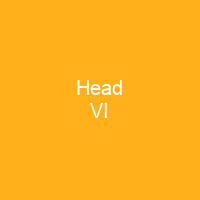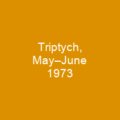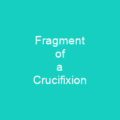Francis Bacon’s ‘Head VI’: A Masterpiece in Artistic Ambiguity
Imagine stepping into a world where art isn’t just about what you see, but how it makes you feel. That’s the essence of Francis Bacon’s “Head VI,” an oil-on-canvas painting that invites us to ponder the depths of human emotion and the complexities of existence. This piece is part of Bacon’s ‘1949 Head’ series, a collection that delves into the isolation and psychological turmoil of its subjects.
The Artistic Journey
When we look at “Head VI,” we see more than just a portrait; it’s a metaphor for the human condition. Bacon created five paintings in this series, each one a unique exploration of formless flesh and haunted atmospheres. The first exhibition of these works was held in November 1949 at the Hanover Gallery in London, drawing both admiration and criticism from art critics.
The Glass Cage
One of the most striking elements of “Head VI” is its use of a glass cage structure. This creates an effect where the figure seems trapped and suffocated, screaming into an airless void. The ambiguity of the pope’s expression leaves us wondering about what exactly he might be screaming about. Is it a cry for help? A scream of despair? Or perhaps a silent plea that goes unheard?
Influences and Inspirations
Bacon was heavily influenced by various artists, including Diego Velázquez, whose 1650 Portrait of Innocent X serves as the model for “Head VI.” However, Bacon’s interpretation is far from a mere copy. He added his own twist, creating a unique artistic voice that resonates with viewers today.
The Mouth and the Scream
The mouth in “Head VI” is opened wide, taken from a still of a nurse in Sergei Eisenstein’s film Battleship Potemkin. Bacon’s interest in the mouth was sparked by a medical textbook on diseased oral cavities, but he wanted to paint the scream more than the horror itself. This detail adds layers of meaning and emotion to the painting.
The Glass Enclosure
A glass enclosure is a recurring motif throughout Bacon’s career, symbolizing a vacuum that the figure’s voice cannot escape. The use of vertical lines in this structure creates a sense of isolation and unobservedness, revealing the subject’s neuroses by reducing it to basic features.
The Artistic Process
Bacon incorporated chance into his work, allowing images to morph midway through creation. This series marks his first attempt at depicting lone figures in rooms, where the subject feels isolated and unobserved. The works are considered poor quality, with Head II being a creative cul-de-sac, while Heads III-VI show progression towards a more developed theme.
The Critical Reception
“Head VI” was praised for its technical skill and masterful handling of color. While some found the paintings’ violence distasteful, Brausen turned this into notoriety, bringing Bacon to national attention. After the exhibition, Bacon became a force to be reckoned with on the contemporary scene, commanding high prices from collectors.
The Legacy
“Head VI” was first exhibited at the Hanover Gallery in 1949 and acquired by the Hayward Gallery’s Arts Council in 1952. It has been loaned out for various retrospectives, including major shows at the Grand Palais and Hugh Lane Gallery. In May 1996, the National Gallery loaned Velázquez’s Innocent X to be displayed alongside four Bacon paintings: Head VI, Pope I (1951), Pope 1961, and Pope 1965.
While Bacon would have disapproved of the showing, some of these pieces enhanced the authority of the Innocent X as a study of human nature and power. This painting remains a testament to the complexity and depth of Francis Bacon’s artistic vision, inviting us to question our own existence and the emotions that drive us.

You want to know more about Head VI?
This page is based on the article Head VI published in Wikipedia (retrieved on November 29, 2024) and was automatically summarized using artificial intelligence.







